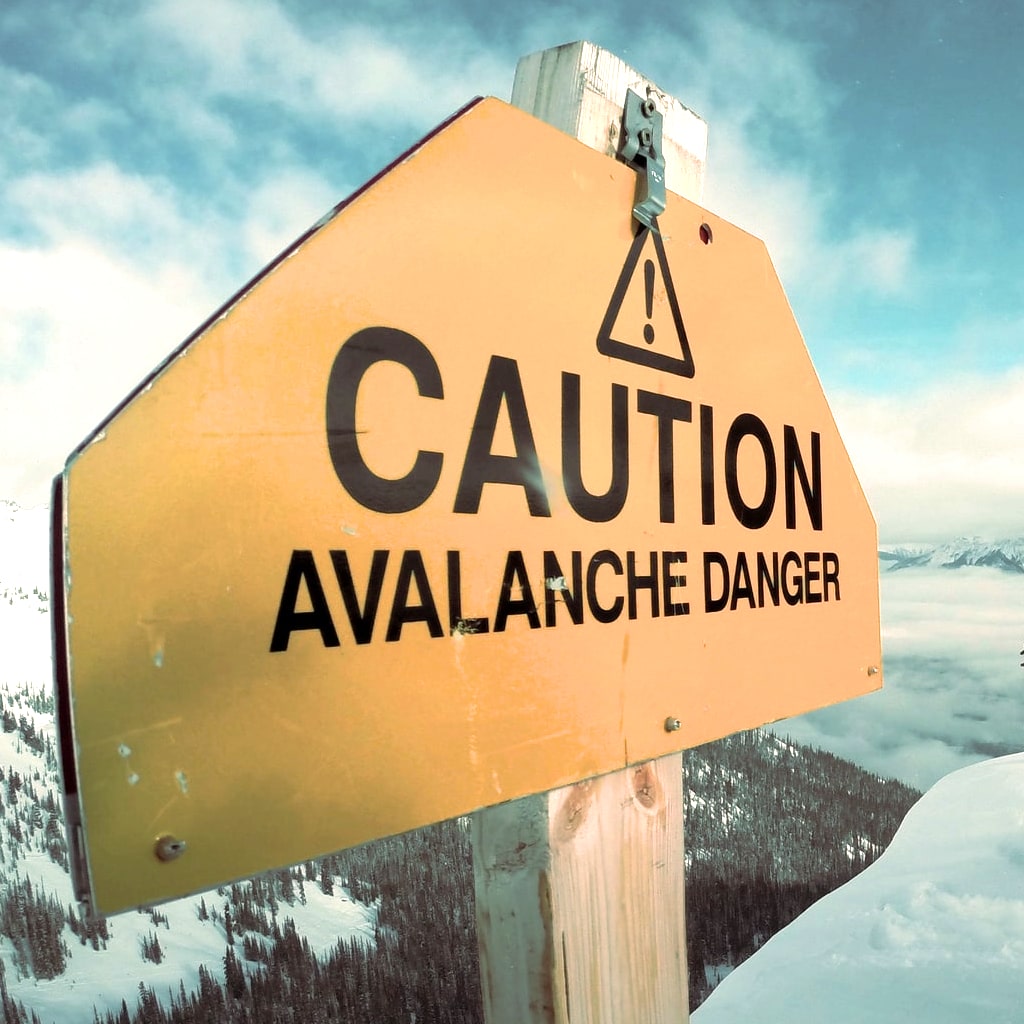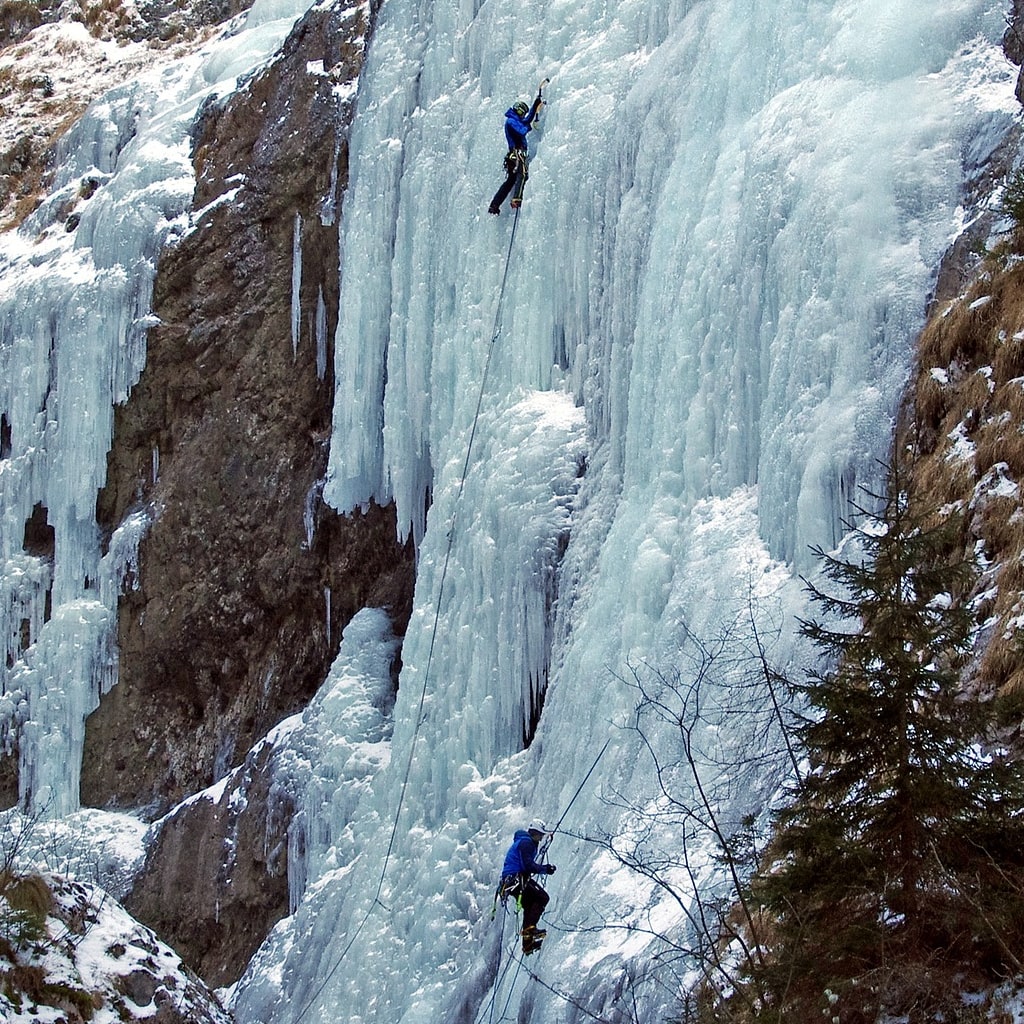Inspired for an Adventure? Check out Beef Stroganoff - Pouch and Beef Stew - Pouch
Free Ground Shipping On All Orders
Over 2,100 Reviews
Add description, images, menus and links to your mega menu
A column with no settings can be used as a spacer
Link to your collections, sales and even external links
Add up to five columns
Add description, images, menus and links to your mega menu
A column with no settings can be used as a spacer
Link to your collections, sales and even external links
Add up to five columns


To many folks, snow’s all the same: white stuff that’s pretty to look at out the window, but annoying to shovel off the walks. But enthusiastic winter outdoor recreationists, and especially downhill skiers and snowboarders, know that not all snow’s created equal, and can talk for hours about different snowpack taxonomies—from “Cascade cement” to corn to downright heavenly powder.
Just as different kinds of snow translate to a different skiing or riding experience, they also behave differently when it comes to avalanching. And given the very real hazard these great snow-slides pose to outdoorspeople in hilly or mountainous country during the winter and spring, it’s worth understanding a thing or two about basic regional avalanche climates and what they mean for the type and frequency of avalanches in a given area.
This is a fairly complicated subject, but we’ll simplify it to the most basic (and generalized) nuts and bolts. (We’re going to frame this discussion in mostly North American—and mostly Lower 48 U.S.—terms, but the snow climates we’ll talk about here apply elsewhere.)
Factors Influencing Avalanche Danger
To help orient us in this discussion, let’s briefly review the two basic kinds of avalanches: loose-snow and slab avalanches. Loose-snow avalanches—aka “sluffs”—are slides of unconsolidated snow, which often result from new snowfall on steep slopes succumbing to gravity or overloading. Nothing to play around with, sluffs are, nonetheless, statistically less dangerous than slab avalanches. And slopes shrugging off sluffs are often in the process of stabilizing, lowering long-term avalanche danger.
Slab avalanches refer to slides of a cohesive layer or unit of snow separating from an underlying weak layer. That weak layer can take many forms, from a buried ice or melt-freeze crust to a brittle tier of faceted snow derived from temperature gradients in the snowpack or a layer of surface “hoarfrost” that’s been covered by subsequent snowfall. Slab avalanches tend to be larger than loose-snow slides and they’re often very hard to predict, given the weak layer that generates them is hidden away and may have been created many days—even weeks or months—before the avalanche actually occurs.
Slab avalanches can be further categorized into a number of subtypes, including distinguishing between wet and dry avalanches based on snow water content. And there are certainly other miscellaneous categories of avalanche to keep in mind, including slides prompted by collapsing cornices (the debris of which can directly form an avalanche, and/or trigger a slab avalanche on the slope below).
The Three Main Avalanche Climates
Avalanche researchers typically identify three major kinds of avalanche climate—that is, three “snow climates” with distinct avalanche characteristics. These are (1) maritime (or coastal), (2) transitional (or intermountain), and (3) continental avalanche climates.
Maritime Avalanche Climate
As the name suggests, maritime avalanche climates are dominated by a marine influence. In the middle and higher latitudes, therefore, these climates tend to lie on the western side of continents where prevailing westerly airflow off the ocean exposes them to cool, moist air masses. In North America, maritime avalanche climates prevail in the Coast Mountains of Alaska and B.C., the Cascades, and the Sierra Nevada.
Oceanic influence keeps maritime avalanche zones milder than the other climate types and tends to deliver large amounts of very heavy—and very wet—snow. (This is the aforementioned “Cascade cement.”) Indeed, high precipitation and steep coastal mountains means maritime avalanche climates receive some of the heaviest average snowfalls in the world, often in excess of 600 inches. Rain-on-snow is a common occurrence. The deep and dense maritime snowpacks exhibit low-temperature gradients, which makes the formation of faceted snow/depth hoar rarer.
Avalanches in maritime zones often result from overloaded snowpacks due to heavy snowfall and wind-loading, and they most typically occur during or just after storms. Persistent weak layers in the snowpack are relatively rare. The relatively warm winter temperatures and direct triggering of slides mean maritime snowpacks stabilize fairly quickly, and, generally speaking, avalanche danger is highest in relatively brief windows right around storms.
All of this shakes out to maritime zones experiencing a somewhat lower overall avalanche danger. But, of course, that’s relative. And, from the Olympics and Cascades of the Pacific Northwest to the Sierra Nevada, winter and spring snowstorms—not least those extremely productive ones generated by so-called atmospheric rivers—can be multi-day affairs in maritime climate zones, resulting in extended periods of high avalanche risk.
Continental Avalanche Climate
Far from the influence of the ocean, continental avalanche climates are much colder than maritime zones, with consequently drier and lighter snowfall. And a lot less snow falls in these interior zones, too: commonly a couple to a few hundred inches per year. Much of the Rocky Mountains fall within North America’s main continental avalanche climate belt; so does the Brooks Range of Alaska.
With frequent incursions of Arctic air, extensive stretches of clear high-pressure weather (with consequently frigid nights), and leaner snowpacks with steep temperature gradients, continental snowpacks often include weak layers of depth hoar. These can persist for weeks, even months, resulting in a high potential for dangerous and hard-to-predict slab avalanches. Overall, avalanche danger is highest in continental zones.
Transitional/Intermountain Avalanche Climate
Transitional avalanche climates lie in between maritime and continental zones and, roughly speaking, show a mixture of their characteristics. In the conterminous U.S., the transitional avalanche climate zone covers a broad area that includes the ranges of the Intermountain West as well as much of the Northern Rockies in Idaho and western Montana, Utah’s Wasatch Mountains, and by some categorizations the southwestern Colorado Rockies.
These zones are colder than maritime climates, milder than continental ones, and receive similarly mid-range amounts of fairly light, fairly dry snow. Avalanches may be “direct-action” slides resulting from the weak layers of fresh snowfall or windblown snow or stem from fairly persistent weak layers days or weeks after their formation. Again: a hybrid of avalanche behavior, with a consequently moderate level of typical avalanche danger.
Seasonal & Geographic Variability in Snow Climates
Keep in mind that the above are definitely brushed in broad strokes. Climate variability within and across seasons—including patterns set by global-scale ocean-atmosphere teleconnections such as the El Niño-La Niña cycle—ensure that the breakdown of transitional, continental, and maritime climate zones isn’t cut-and-dried. Mountains generally classified as maritime can experience a weather pattern resulting in a continental-type snowpack, and vice versa. Indeed, transitional mountains often seesaw between maritime and continental weather patterns or even whole seasons.
Furthermore, more localized climates resulting from geographic position and topography can make a mountain range show a chronically different avalanche climate than the prevailing zone it falls within.
Assessing Avalanche Danger & Detecting Avalanche Snowpack Conditions in Different Climate Zones
What does all of the above mean for predicting avalanches and evaluating avalanche danger on a week-by-week, day-by-day basis? Well, avalanche forecasters will naturally avail themselves of all available tools and clues when it comes to assessing current avalanche danger, but the main approach can vary depending between avalanche climate zones.
For example, in maritime climates, the current weather forecast as well as recent avalanche observations often mostly establish the risk level, because avalanches in these zones frequently result from weakness in fresh snowfall and tend to trigger fairly quickly. Given weak layers often persist much longer in transitional and (especially) continental climate zones, avalanche forecasting in these areas is more complicated and will typically involve on-the-ground snowpack tests as well as monitoring of weather patterns and avalanche behavior.
Climate Change & Avalanche Climates
A warming climate is already impacting North American snowpacks and the dynamics of the continent’s avalanche zones. Much research is looking into the potential effects on avalanche behavior and danger from climate change. Models suggest more winter precipitation at high elevations in many mountain ranges will fall as rain rather than snow. Rain-on-snow events—which can be significant triggers of avalanches—may increase. Warmer air can hold more moisture, so even though snowfall may be less frequent and snow cover scantier overall, storms may drop larger amounts of snow at once, raising avalanche risk. But it’s also possible warmer temperatures will result in lower temperature gradients in snowpacks and more readily stabilize them.
Stay Avalanche Aware This Winter & Spring
Crank up your avalanche savvy by visiting the online clearinghouse Avalanche.org, and by checking out some of our Mountain House blog posts on the subject of snowslides, such as:
● Backcountry Skiing, Snowshoeing, & Climbing: Assessing Avalanche Terrain
Meanwhile, along with a firm foundation of avalanche knowledge (take an avalanche safety course!), don’t forget to bring Mountain House meals along on your next snowsports adventure in the hills!

How to Survive in Cold Weather in the Wilderness

A Beginner’s Ice-Climbing Guide: How to Get Started


Stay Hungry for Adventure
Sign Up for Delicious Outdoor Meals & Exclusive Offers!
By clicking ‘Join Now’, I agree to the Terms of Service and Privacy Policy.


Join the adventure
©2026 Mountain House — All Rights Reserved.
Your Cart is Empty
Continue ShoppingYour Cart
Subtotal
$0.00
EXPRESS PAYMENT METHODS AVAILABLE IN CHECKOUT
Taxes and Shipping Calculated at Checkout
Your ExpertVoice deal.
$[Deal Price]
$[Original Price]
Discount applied at checkout.
On sale now — lower than your ExpertVoice discount.
Not eligible for ExpertVoice discount.














